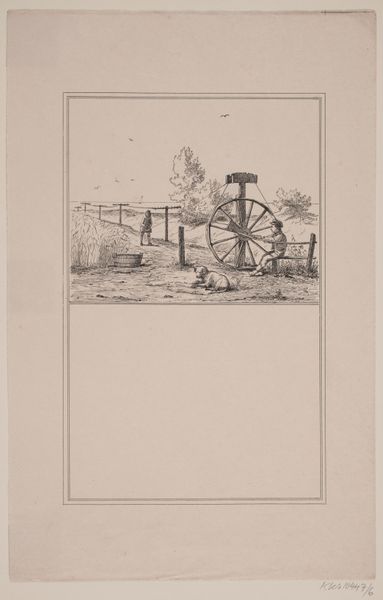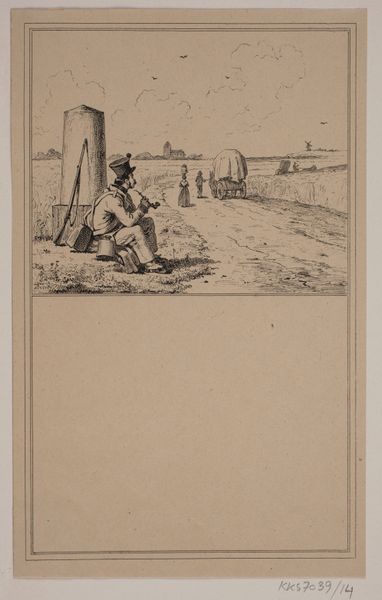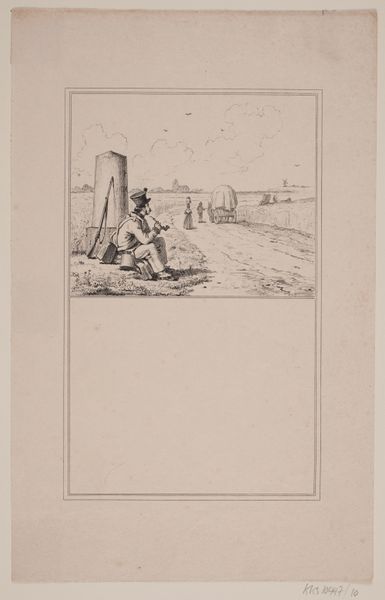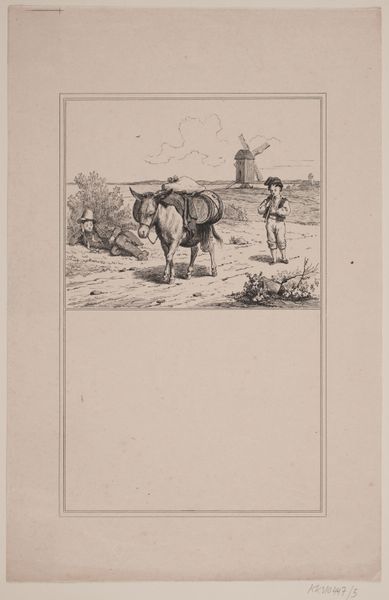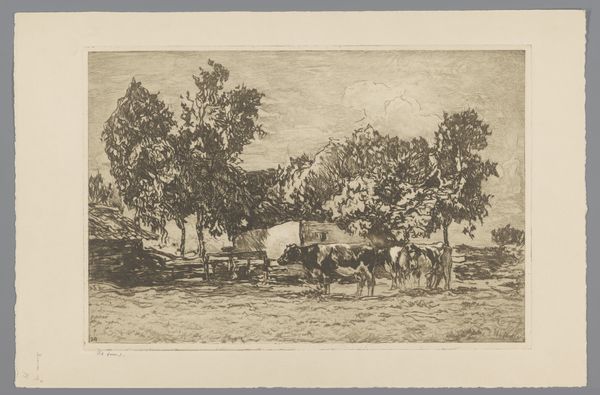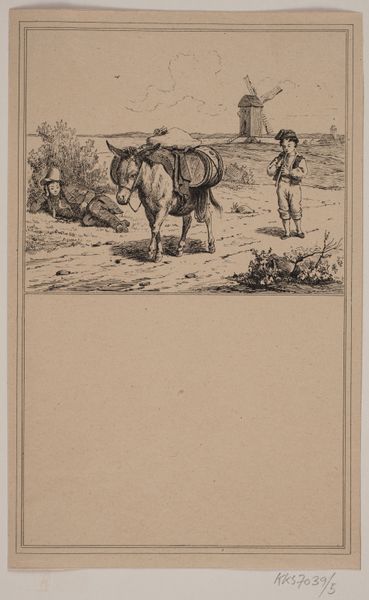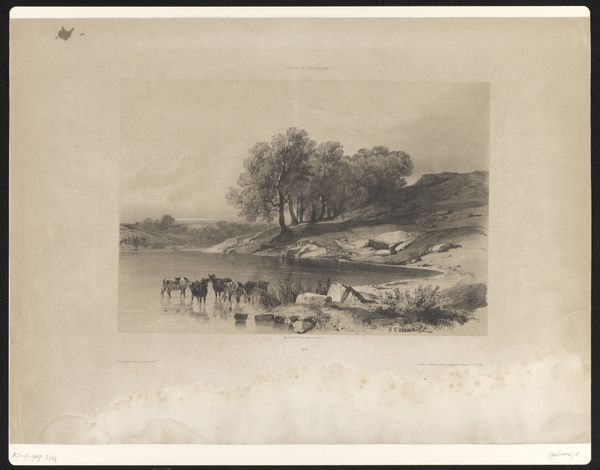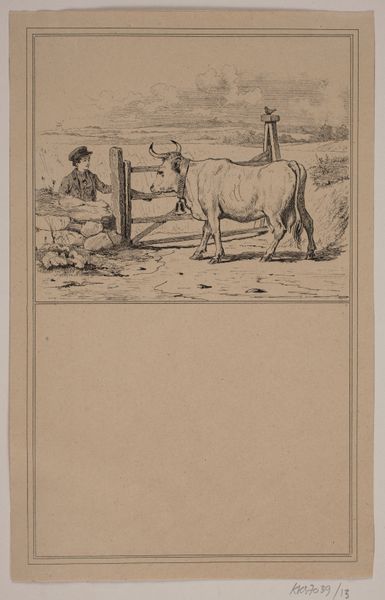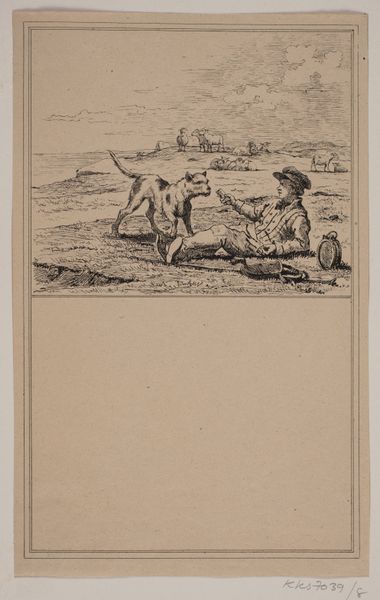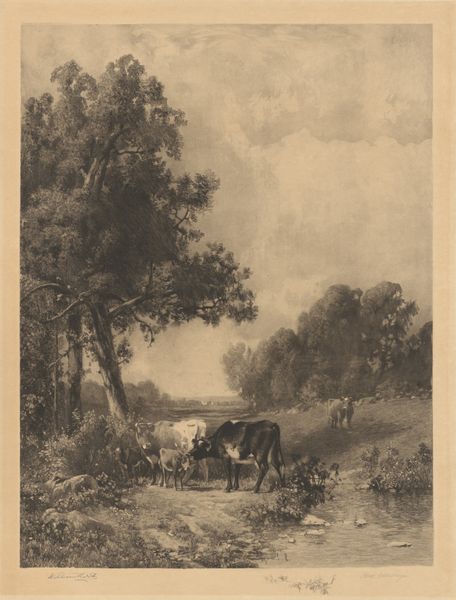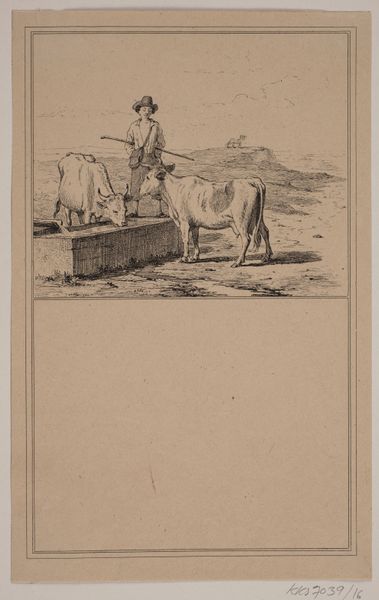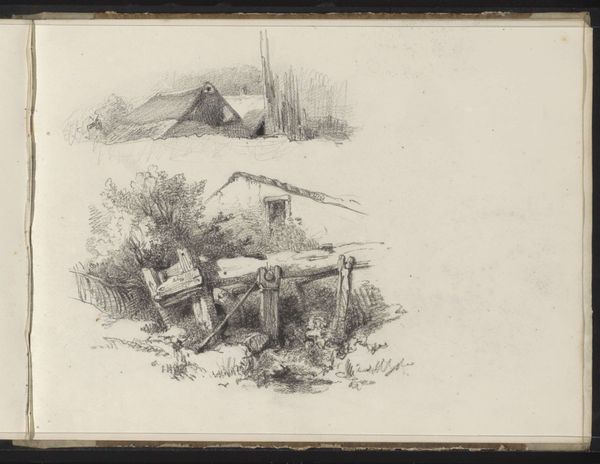
Rebslageren. Nr. 5 i Chr. Winther og M. Rørbye, "25 Billeder for små børn" 1846
0:00
0:00
drawing, graphic-art, lithograph, print, ink
#
drawing
#
graphic-art
#
lithograph
# print
#
landscape
#
ink
#
romanticism
#
line
#
genre-painting
#
northern-renaissance
Dimensions: 205 mm (height) x 130 mm (width) (brutto)
Curator: Today we’re looking at "Rebslageren," which translates to "The Rope Maker," the fifth image in the series "25 Pictures for Small Children" by Christian Winther and Martinus Rørbye with lithography by Adolph Kittendorff, created in 1846. Editor: It strikes me immediately as pastoral, with this overarching sense of calm. A very centered composition too, the turning wheel being central in the plane, creating that overall quietness. Curator: Precisely! Notice how Kittendorff’s lithographic lines work to define the scene—the texture of the wheat, the subtle shading on the dog. There's an undeniable balance and elegance in its simplicity. What can you tell us about the social dynamics captured? Editor: What I find truly fascinating is the capture of everyday life during the mid-19th century in Denmark. The image shows not only the rope maker himself working by the wheel, but a person stands at the edge of a wheat field, looking upon an object; what are the different meanings to each worker’s place? Are their standings aligned, and how can we infer such alignment from their proximity? Curator: Excellent point! Considering that this image was intended for children, the artists employ a rather clever visual rhetoric, using a seemingly benign scene to underscore broader societal expectations. Consider the use of linear perspective. The line guides our gaze but is never heavy handed; and also see the careful distribution of weight across the pictorial space. Editor: And those subtle cues—the children learning to observe the quiet industry that their surroundings rely upon, the future contributions society may need of them! One can explore if they will continue to partake, generationally, or if other societal dynamics would dictate that these subjects and children may pursue another role or profession in Danish culture. Curator: Indeed, the artist utilizes formal composition, while capturing the human connection between land and craft and labour, making these children understand their position in society. Any final reflections? Editor: I see a complex social structure embedded within seemingly simple lines. Curator: I agree; this print speaks volumes about pictorial expression.
Comments
No comments
Be the first to comment and join the conversation on the ultimate creative platform.
